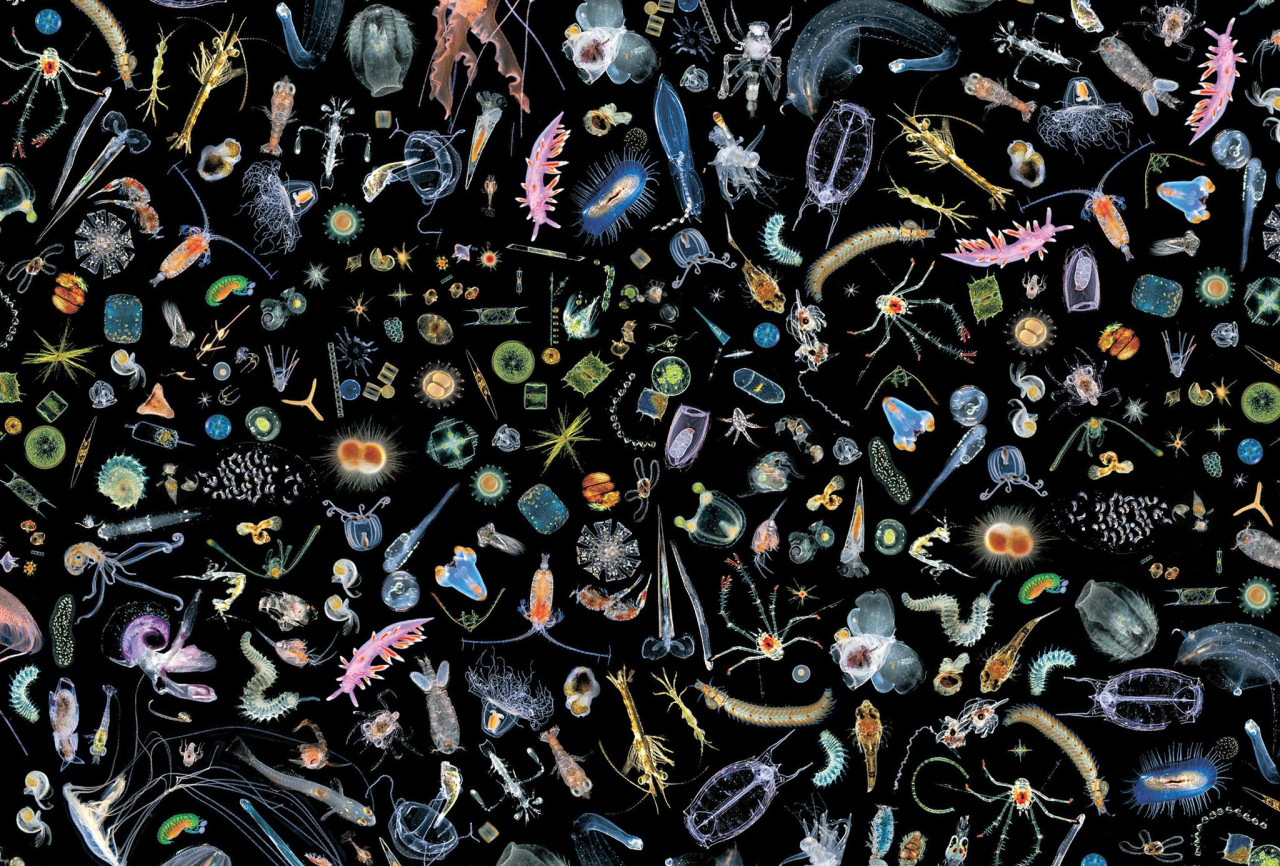Plankton, concentrated life in a single drop of water

Our Vendée Globe heroes perfectly understand the wind, waves, sea currents and climates of the earth. They remind us that our planet is small, blue, and that the ocean is a common good for humanity. But what they sometimes ignore, like most of us, is that their boats are flying over an abundance of life!
An essential ecosystem...
Sea water is alive. In each litre of water, there are between 10 and 100 billion organisms (there are 7.7 billion humans on earth!), most of them invisible to our eyes. These organisms that float and drift with the ocean currents are called 'plankton'. Together in their aquatic habitat, they form what is called an eco-system, comparable to that of forests or deserts; the 'plankton' ecosystem is gigantic since it extends everywhere there is water, from the poles to the equator, from the surface of the oceans to several kilometres deep.
Today, we know that marine plankton produce about half of the planet's oxygen (O2), that it generates the living matter that feeds visible marine organisms - shellfish, crustaceans, fish, birds, dolphins and whales - and that it plays a fundamental role in regulating the climate and the major ecological balances of our planet.
... and still little is known
Like terrestrial ecosystems, there are all known forms of life in plankton, from viruses to animals, including bacteria, archaea, and protists. It is therefore a truly floating forest, with tens of thousands of species in each place.
And the plankton presents extraordinary specificities. The 'plants' are much smaller than the animals, and for the most part unicellular (bacteria and protists). These unicellular 'plants' are very often able to eat...species of ‘animalgae’ or ‘vegimals’ as it were. Animals are often transparent, gelatinous, with mysterious behaviours. The unicellular organisms, with shapes as magical as they are varied, form a starry sky. And all this small world, still largely unknown, floats and interacts with the sandstone currents.
Plankton around the world
The Vendée Globe represents a superb opportunity to meet, sample, and learn more about life in the seawater. The planetary route crosses contrasting areas, difficult to access, and a dozen oceanic provinces representing at least as many plankton landscapes. Above all, this suspended world still conceals many mysteries. It is urgent today to understand its biodiversity and how it functions because our survival depends on it.
In this 2020-21 edition, as part of a partnership between the IMOCA Class and Plankton Planet, we will discover these plankton landscapes at the pace of the race, with plankton portraits that tell part of the story. For the first time on racing yachts, Sam Davies and Didac Costa will also sample the living plankton aboard their racing yacht! A formidable challenge because plankton life is one of the most fragile. But a challenge that could eventually give a new dimension to the regattas: that of measuring the living ocean and understanding its evolution.
Learn more about plankton here: Plankton Planet
Teams info
After a stunning 2025 season Sam Goodchild is the IMOCA Globe Series Champion for the second time
After a long season at the top of the IMOCA fleet that featured three race wins, Great Britain’s Sam Goodchild is for the second time in three years the IMOCA Globe Series Champion.
•••Quel rôle peut jouer la course au large dans la transformation du transport international ? Avec Pie…
Pour ce 10ᵉ épisode de Transitions, enregistré au Havre lors du départ de la Transat Café L'Or, nous recevons Jeremy Pochman, PDG de 11th Hour Racing, et Pierre-Antoine Morvan, responsable du pôle course au large et supe…
•••